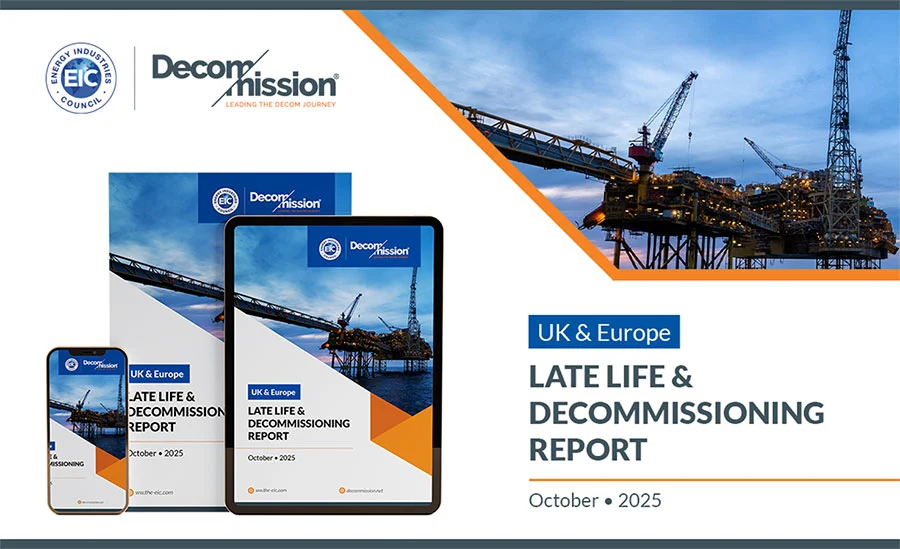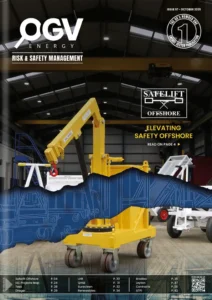$89 billion in nuclear decommissioning projects already awarded; long tail expected to run for decades
London, 27 Nov 2025: Europe’s nuclear decommissioning pipeline is valued at more than $120 billion, with roughly $89 billion already awarded, according to a new report from the Energy Industries Council (EIC) and Decom Mission.
The Uk & Europe Late Life & Decommissioning Report shows that nuclear dismantling remains the region’s largest end-of-life market, while oil and gas decommissioning is expected to dominate near-term activity. The first wind farm removals are also starting across Northern Europe, marking early overlap between renewable buildout and retirement cycles.
More than 130 nuclear reactors across Europe are either undergoing, preparing for, or scheduled for decommissioning under multi-decade programs. The UK hosts the largest concentration of projects, led by Sellafield, Magnox, and Dounreay, followed by Germany and France.
Outside the UK, oil and gas decommissioning work across continental Europe totals about $16.5 billion, of which $7 billion has already been awarded. The largest portion involves plug and abandonment (P&A), the process of permanently sealing oil and gas wells, accounting for roughly half of total spend, followed by subsea and topsides removals.
In addition to this, total decommissioning expenditure in the UK North Sea is projected at around £27 billion ($34 billion) through 2032, much of it dependent on vessel and rig availability.
The report is the first in a quarterly global series jointly produced by EIC and Decom Mission. It tracks end-of-life activity across regions and sectors, analysing timing, supply chain capacity, and project execution to support decision-making among operators, contractors, and policymakers involved in decommissioning.
EIC is one of the world’s largest energy trade associations, providing project data, market intelligence, events, and advocacy for supply chain businesses worldwide. Decom Mission is a not-for-profit trade association dedicated to end-of-life and decommissioning across oil and gas, nuclear, renewables, and power, representing asset owners, operators, and suppliers across the value chain.
Beyond nuclear and oil & gas, dismantling of coal and refinery assets is beginning to gather momentum across Europe. Coal plant closures continue in Southern and Eastern Europe, including Austria, the Czech Republic, Denmark, and Poland. Meanwhile, refinery closedowns in the UK and Western Europe are creating technically complex demolition work involving dismantling large interconnected units and handling contaminated materials.
The first generation of onshore and offshore wind farms, mainly in Germany, Denmark, and the UK, is now entering removal phases. Those activities are beginning to compete with new wind construction for ports, heavy lift vessels, and skilled crews, potentially tightening supply chain capacity in the years ahead.
“End-of-life planning is now a strategic exercise,” said Stuart Broadley, CEO of the Energy Industries Council. “The same supply chain that dismantles ageing oil, gas, and nuclear assets is also building the infrastructure of the energy transition. Securing vessel slots, skilled crews, and waste handling capacity early is becoming critical to controlling cost and schedule.”
“Decommissioning is a growth market in its own right,” added Sam Long, CEO of Decom Mission. “As global energy systems evolve, the challenge is not only to retire assets safely but to do so efficiently and sustainably. Delivery depends on the availability of heavy lift vessels and specialised cranes, together with skilled workers and disciplined project management.”
To read the full report, visit: https://www.the-eic.com/MediaCentre/Publicat ions/Reports
“When you share your news through OGV, you’re not just getting coverage – you’re getting endorsed by the energy sector’s most trusted voice.”















